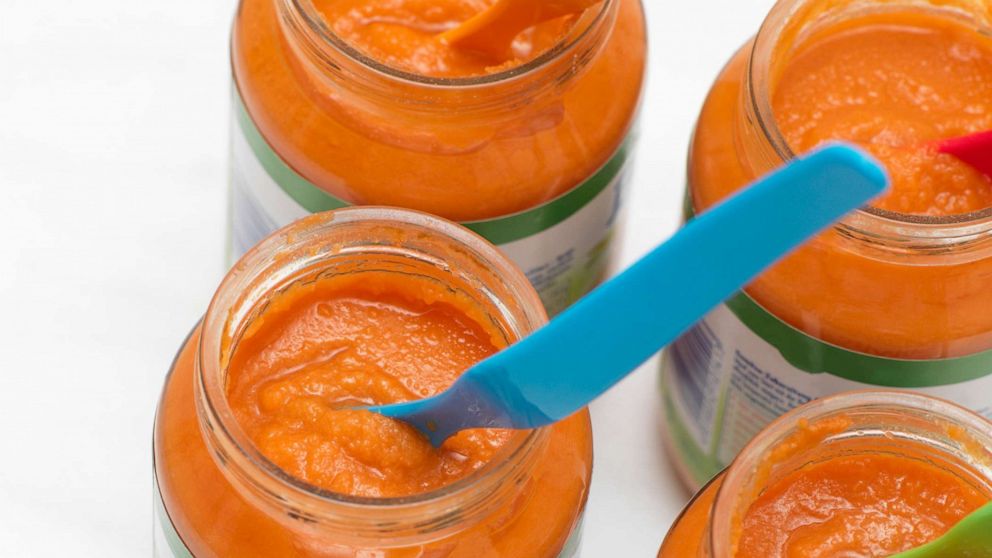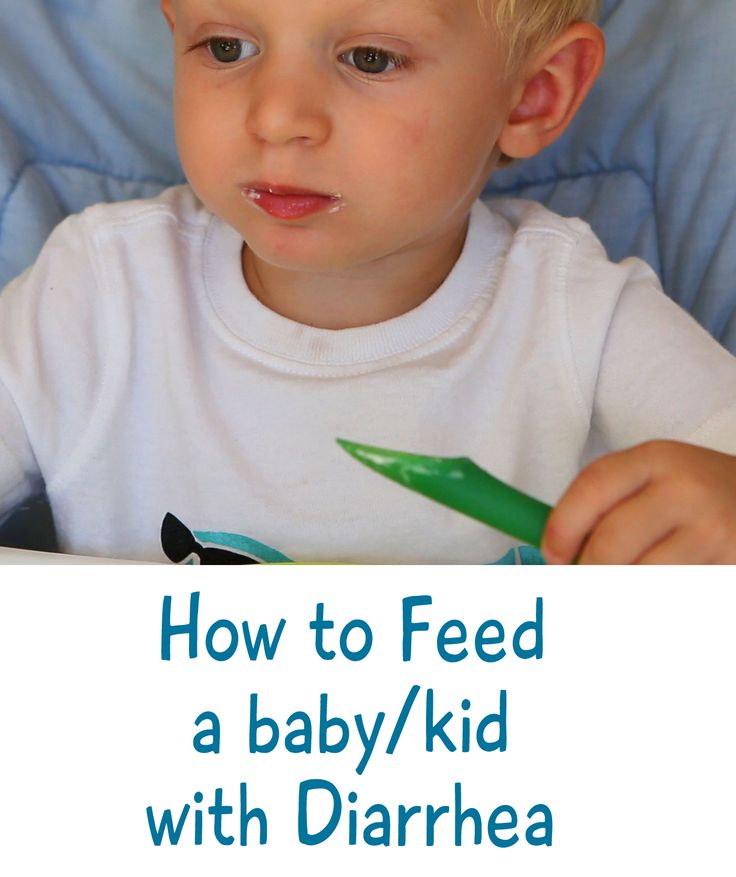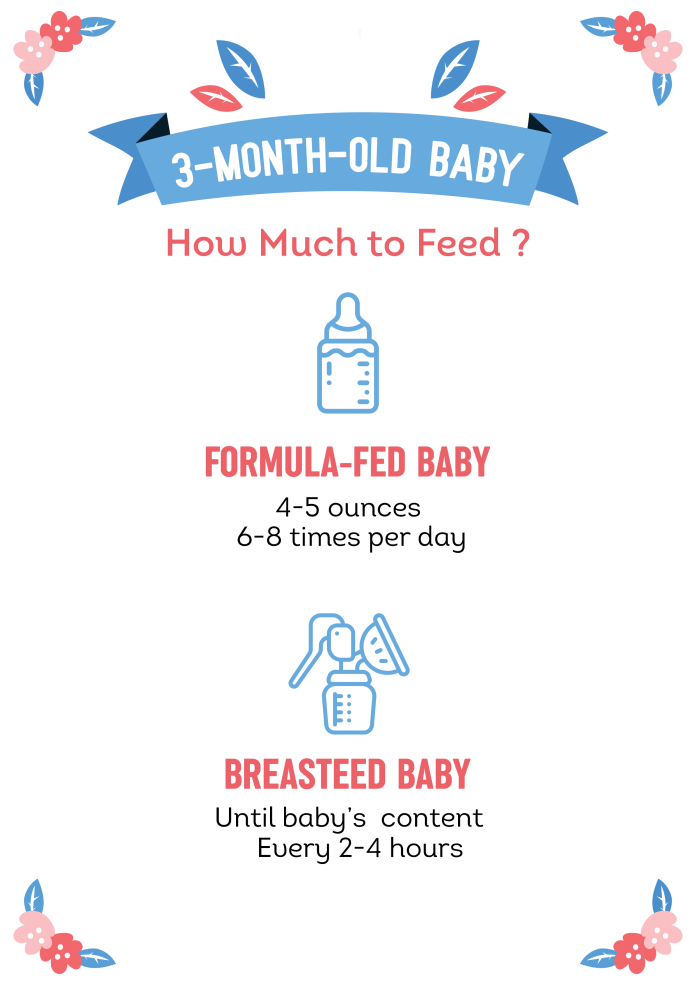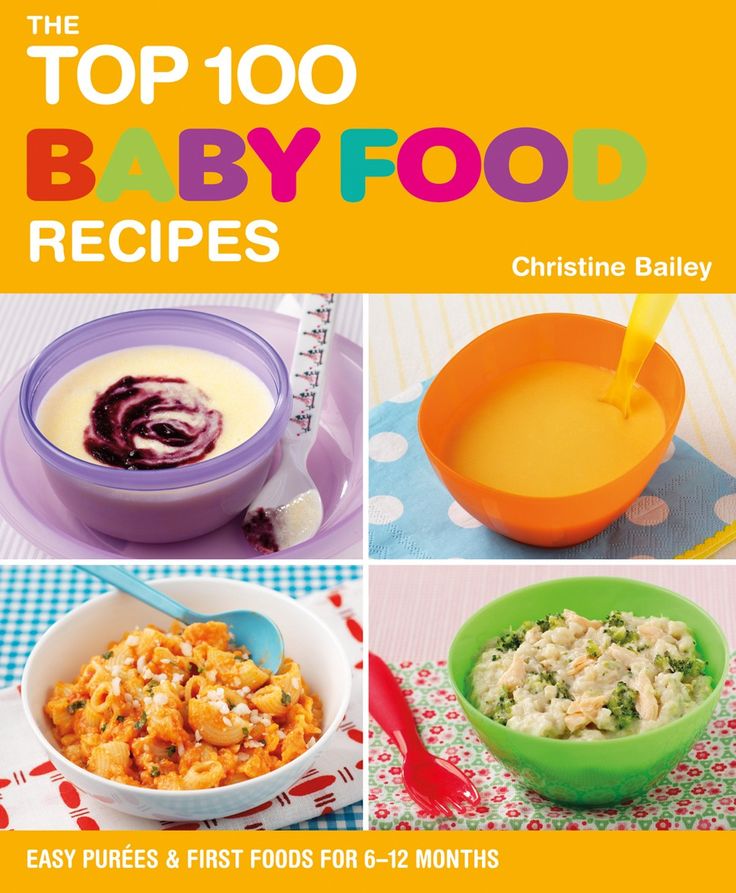Can feeding a baby food too early cause allergies
Allergy Risk Tied to Early Solid Foods
Exclusive Breastfeeding for Six Months Is Protective, Top Allergy Group Says
Written by Salynn Boyles
July 28, 2006 -- New moms should breastfeed exclusively for six months to help protect their babies against developing food allergies later on, one of the nation's leading allergy and asthmagroups says.
Solid foods of all types should be avoided for the first six months, and certain items -- like cow's milk, eggs, fish, and nuts -- should not be introduced until even later, according to a consensus statement on infant feeding released this week by the American College of Allergy, Asthma and Immunology (ACAAI).
"It is important to understand that we are talking about exclusive breastfeeding, with no formula, soy or anything else," researcher Amal Assa'ad, MD, tells WebMD. "This appears to be important for protecting against allergies."
The ACAAI committee came up with its recommendations after reviewing the available clinical evidence. The consensus statement is published in July's Annals of Allergy, Asthma & Immunology -- the journal of the ACAAI.
Foods Should Be Introduced Gradually
The American Academy of Pediatrics (AAP) also recommends exclusive breastfeeding for six months, followed by gradual introduction of solid foods.
Some infants and mothers with certain medical conditions or who are undergoing certain medical treatments should not breastfeed.
AAP guidelines also include detailed suggestions about when infants at risk for developing allergies should first be given certain foods, which the ACAAI committee endorsed.
The ACAAI food allergy committee also specifically recommends that -- when there is evidence of an increased risk for food allergies -- cow's milk and other dairy products should be avoided for the first year of life; eggs should not be given until at least age 2; and peanuts, tree nuts, fish, and other seafood should be avoided until at least age 3.
Although the foods above are the most likely to trigger allergies, other foods may also pose a risk if introduced too early, the group noted.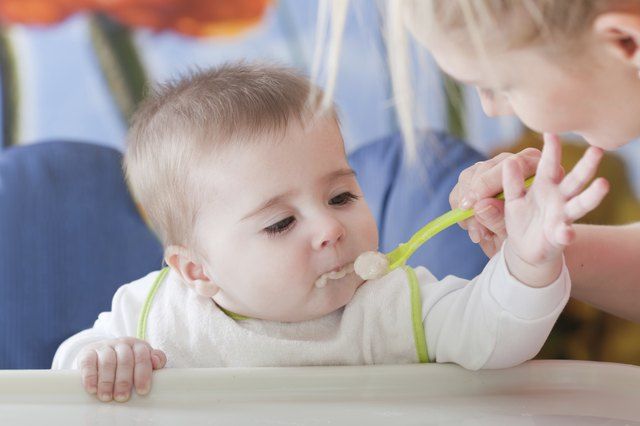
Other Recommendations
In addition to exclusive breastfeeding and avoidance of solid foods for six months, the ACAAI committee recommended that:
Staple foods, such as fruits, vegetables, meats, soy, and cereal be introduced "individually and gradually" to lessen allergy risk.
Mixed foods containing a variety of potentially allergenic foods should be avoided until the baby's tolerance to each ingredient is known.
Beef, vegetables, and fruits should initially be given in the form of prepared baby foods that are cooked and homogenized. Studies suggest these processed foods are less likely to cause allergiesthan their fresh counterparts.
The committee made no specific recommendations regarding introduction of wheat and cereals into the diets of babies older than six months. "In many people's minds, wheat is a highly allergenic food, but the clinical evidence does not support this," Assa'ad says.
"The timing after age 6 months at which specific foods should be introduced depends on a number of factors, including the individual infant's nutritional needs and risk for allergies," committee chairman Alessandro Fiocchi, MD, said.
Evidence Compelling but Not Conclusive
Assa'ad says breast milk contains many of the same food allergens as individual foods, but instead of promoting allergies, it appears to help babies become tolerant as their immune systems develop.
Assa'ad acknowledged there is still debate about the impact of food introduction timing on allergy risk.
Even so, the committee wrote in its consensus state, "There seems to be no reason why delayed exposure to solid foods should not prove similarly useful (as the delay of cow's milk) in the prevention of food allergies," the committee wrote in its consensus statement.
Introducing solid food - PMC
1. Høst A, Koletzko B, Dreborg S, Muraro A, Wahn U, Aggett P, et al. Dietary products used in infants for treatment and prevention of food allergy. Joint Statement of the European Society for Paediatric Allergology and Clinical Immunology (ESPACI) Committee on Hypoallergenic Formulas and the European Society for Paediatric Gastroenterology, Hepatology and Nutrition (ESPGHAN) Committee on Nutrition.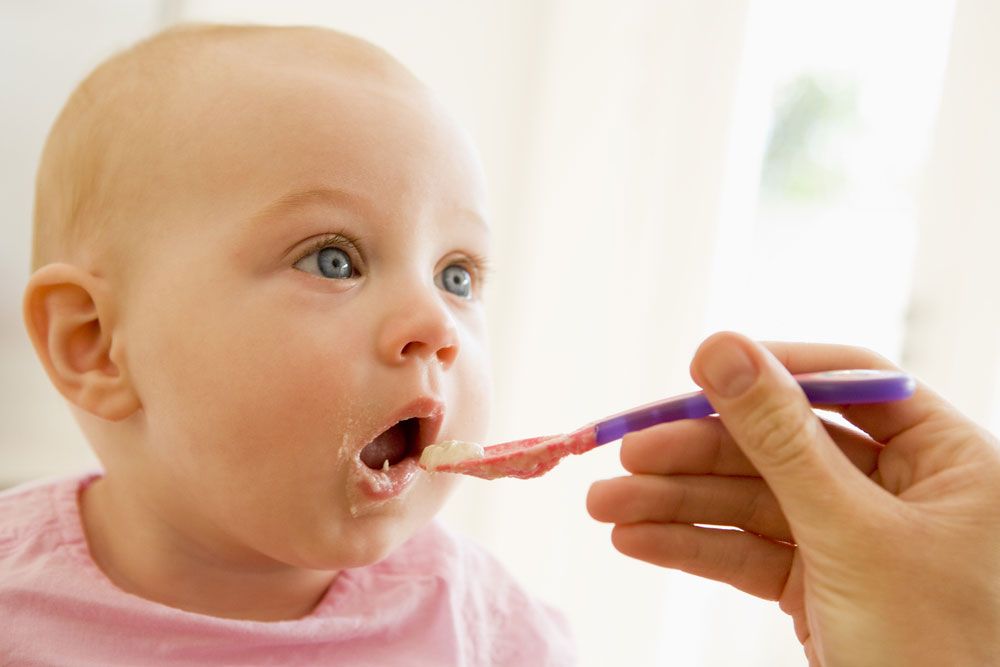 Arch Dis Child. 1999;81(1):80–94. [PMC free article] [PubMed] [Google Scholar]
Arch Dis Child. 1999;81(1):80–94. [PMC free article] [PubMed] [Google Scholar]
2. Zeiger RS. Food allergen avoidance in the prevention of food allergy in infants and children. Pediatrics. 2003;111(6 Pt 3):1662–71. [PubMed] [Google Scholar]
3. Kajosaari M. Atopy prevention in childhood: the role of diet. Prospective 5-year follow-up of high-risk infants with six months exclusive breastfeeding and solid food elimination. Pediatr Allergy Immunol. 1994;5(6 Suppl):26–8. [PubMed] [Google Scholar]
4. Fergusson DM, Horwood LJ, Shannon FT. Early solid feeding and recurrent childhood eczema: a 10-year longitudinal study. Pediatrics. 1990;86(4):541–6. [PubMed] [Google Scholar]
5. Fiocchi A, Assa’ad A, Bahna S, Adverse Reactions to Foods Committee; American College of Allergy, Asthma and Immunology Food allergy and the introduction of solid foods to infants: a consensus document. Ann Allergy Asthma Immunol. 2006;97(1):10–20. [PubMed] [Google Scholar]
6. Morgan J, Williams P, Norris F, Williams CM, Larkin M, Hampton S.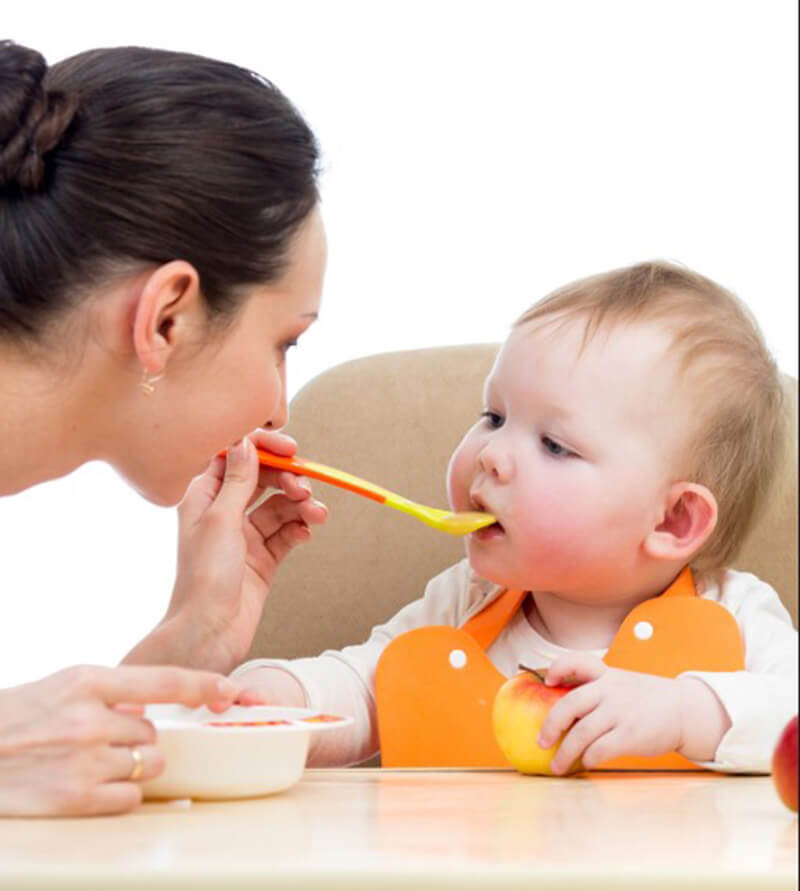 Eczema and early solid feeding in preterm infants. Arch Dis Child. 2004;89(4):309–14. [PMC free article] [PubMed] [Google Scholar]
Eczema and early solid feeding in preterm infants. Arch Dis Child. 2004;89(4):309–14. [PMC free article] [PubMed] [Google Scholar]
7. Liem JJ, Kozyrskyj AL, Huq SI, Becker AB. The risk of developing food allergy in premature or low-birth-weight children. J Allergy Clin Immunol. 2007;119(5):1203–9. Epub 2007 Mar 26. [PubMed] [Google Scholar]
8. Du Toit G, Katz Y, Sasieni P, Mesher D, Maleki SJ, Fisher HR, et al. Early consumption of peanuts in infancy is associated with a low prevalence of peanut allergy. J Allergy Clin Immunol. 2008;122(5):984–91. [PubMed] [Google Scholar]
9. Poole JA, Barriga K, Leung DY, Hoffman M, Eisenbarth GS, Rewers M, et al. Timing of initial exposure to cereal grains and the risk of wheat allergy. Pediatrics. 2006;117(6):2175–82. [PubMed] [Google Scholar]
10. Koplin JJ, Osborne NJ, Wake M, Martin PE, Gurrin LC, Robinson MN, et al. Can early introduction of egg prevent egg allergy in infants? A population-based study. J Allergy Clin Immunol. 2010;126(4):807–13. [PubMed] [Google Scholar]
2010;126(4):807–13. [PubMed] [Google Scholar]
11. Katz Y, Rajuan N, Goldberg MR, Eisenberg E, Heyman E, Cohen A, et al. Early exposure to cow’s milk protein is protective against IgE-mediated cow’s milk protein allergy. J Allergy Clin Immunol. 2010;126(1):77–82.e1. Epub 2010 Jun 11. [PubMed] [Google Scholar]
12. Snijders BE, Thijs C, van Ree R, van den Brandt PA. Age at first introduction of cow milk products and other food products in relation to infant atopic manifestations in the first 2 years of life: the KOALA Birth Cohort Study. Pediatrics. 2008;122(1):e115–22. [PubMed] [Google Scholar]
13. Greer FR, Sicherer SH, Burks AW, American Academy of Pediatrics Committee on Nutrition; American Academy of Pediatrics Section on Allergy and Immunology Effects of early nutritional interventions on the development of atopic disease in infants and children: the role of maternal dietary restriction, breastfeeding, timing of introduction of complementary foods, and hydrolyzed formulas. Pediatrics. 2008;121(1):183–91. [PubMed] [Google Scholar]
Pediatrics. 2008;121(1):183–91. [PubMed] [Google Scholar]
14. NIAID-Sponsored Expert Panel. Boyce JA, Assa’ad A, Burks AW, Jones SM, Sampson HA, et al. Guidelines for the diagnosis and management of food allergy in the United States: report of the NIAID-sponsored expert panel. J Allergy Clin Immunol. 2010;126(6 Suppl):S1–58. [PMC free article] [PubMed] [Google Scholar]
15. Liem JJ, Huq S, Kozyrskyj AL, Becker AB. Should younger siblings of peanut-allergic children be assessed by an allergist before being fed peanut? Allergy Asthma Clin Immunol. 2008;4(4):144–9. Epub 2008 Dec 15. [PMC free article] [PubMed] [Google Scholar]
16. Nowak-Węgrzyn A, Sampson HA. Future therapies for food allergies. J Allergy Clin Immunol. 2011;127(3):558–73. Epub 2011 Jan 31. [PMC free article] [PubMed] [Google Scholar]
Feeding for cow's milk protein allergy
- Nestlé Health Science
- health care
- Feeding with CMPA
Feeding and treatment of CMPA
The appearance of allergy symptoms in an infant always causes fear in parents.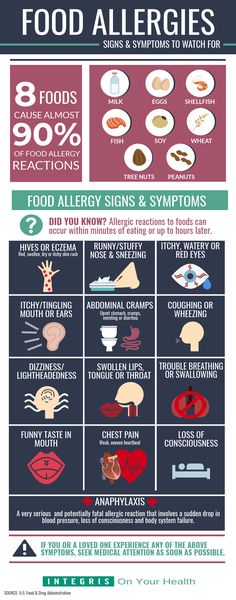 The first step is to consult a doctor who will conduct an examination, make the correct diagnosis and prescribe competent treatment. With the right approach, most symptoms will disappear within 2-4 weeks.
The first step is to consult a doctor who will conduct an examination, make the correct diagnosis and prescribe competent treatment. With the right approach, most symptoms will disappear within 2-4 weeks.
Important! Do not experiment with a diet that excludes cow's milk protein without the advice and direction of a doctor.
Breastfeeding is the best nutritional option for you and your baby. Even if your baby has been diagnosed with CMPA, breastfeeding should continue. Based on the severity of the symptoms and the presence of other types of food allergies in the child, the doctor will help determine the most appropriate diet for your child to quickly resolve the symptoms of the allergy.
Continue breastfeeding
A diagnosis of CMPA should not affect breastfeeding. Breastfeeding is the best nutritional option for your baby. Breast milk contains all the nutrients your baby especially needs during the first 6 months and continues to be beneficial for a long time to come. In addition to nutritional properties, breast milk contains antibodies, leukocytes and immune complexes, which together form the baby's immunity. In rare cases where the baby's immune system reacts to cow's milk proteins in breast milk, your doctor may recommend that you start a diet eliminating cow's milk proteins entirely (remember that a dairy-free diet may not be sufficient, as all traces of cow's milk must be eliminated) .
In addition to nutritional properties, breast milk contains antibodies, leukocytes and immune complexes, which together form the baby's immunity. In rare cases where the baby's immune system reacts to cow's milk proteins in breast milk, your doctor may recommend that you start a diet eliminating cow's milk proteins entirely (remember that a dairy-free diet may not be sufficient, as all traces of cow's milk must be eliminated) .
Early start: The sooner you start breastfeeding, the better. According to doctors, starting breastfeeding within 1 hour of birth ensures that your baby receives first milk (colostrum) and the protective factors it contains as soon as possible.
Emotional Benefit: Breastfeeding is an important factor in establishing and maintaining a strong emotional bond with your baby.
Long-term health benefits: Breastfeeding will also help develop your baby's immune system and thus protect your baby's health in the long term.
Protection for you and your baby: Studies have shown that breastfeeding reduces the risk of further infections in children, digestive tract diseases, diabetes, obesity and even leukemia. Breastfeeding is also good for you! Mothers who breastfeed have a reduced risk of developing diabetes, as well as breast and ovarian cancer.
Importance and benefits of breastfeeding
The sooner the better
- Breastfeeding during the first hour of birth ensures that the baby receives its first milk called colostrum
- Exclusive breastfeeding recommended for the first 6 months
Protective role for you and your child
- Breast milk is rich in protective factors that promote healthy growth and development in babies and reduce the risk of developing diseases later on.
- Mothers who breastfeed have a lower risk of developing diabetes and developing breast and ovarian cancer
Emotional Benefits
- You and your child develop and maintain a strong emotional bond.

What type of food is best for my child?
The only way to eliminate symptoms is to eliminate cow's milk proteins from the child's diet.
Important! Do not experiment with a diet that excludes cow's milk protein without the advice and direction of a doctor.
If breastfeeding is not possible, or supplemented with infant formula, your doctor will help you select an appropriate infant formula that does not contain cow's milk proteins. These infant formulas are formulated with children in mind and contain all the necessary nutrients to support growth and development.
These specialized infant formulas can be based on:
- cow's milk processed in a certain way so that the proteins are no longer recognized by the baby's immune system and therefore do not cause an allergic reaction
- amino acids
The table below describes the differences between the two types of infant formula.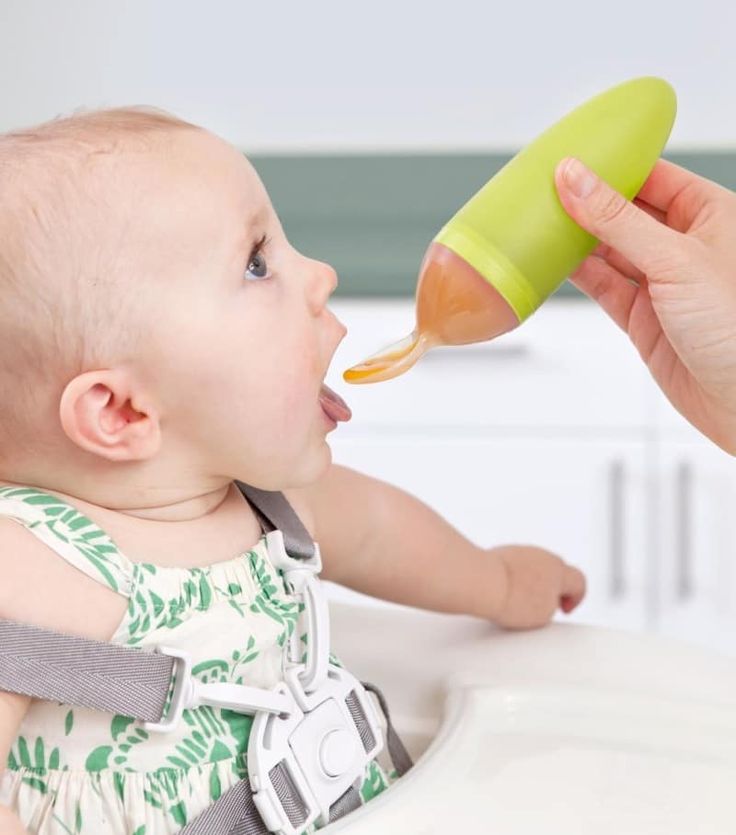
| SOGSB | SOA | |
| What is it? | WGHB stands for "Whey Protein Hydrolysate Blend". The proteins in cow's milk that cause allergic reactions in a baby are severely broken down (hydrolyzed). | COA stands for "amino acid blend". This mixture does not contain any cow's milk proteins. |
| What does it consist of? | Cow's milk proteins have been broken down into smaller particles, which means they can no longer be recognized by the baby's immune system. Mixtures contain the macro- and micronutrients necessary for the child. | In severe forms of allergies, an amino acid mixture is used. This mixture does not contain any cow's milk proteins. The mixture is also enriched with all the necessary elements to support healthy growth and development. |
When and how to introduce complementary foods
At 6 months of age, breastfeeding (or special infant formula) is no longer sufficient to fully support a child's growth and development and supplementary foods must be introduced into the diet. But throughout this time, breastfeeding (or special infant formula) is still the main source of nutrition for the baby.
But throughout this time, breastfeeding (or special infant formula) is still the main source of nutrition for the baby.
It is important to introduce complementary foods on time. The reflex responsible for moving solid foods in the mouth and swallowing them usually develops between 4 and 7 months of age. If you start solid foods too early, the baby will not be ready for it. Similarly, if you start too late, your child may not get all the nutritional support he or she needs, which increases the child's risk of developing essential vitamin and mineral deficiencies and stunting. Along with the nutritional benefits, introducing complementary foods will also provide sensory stimulation and improve your baby's motor skills.
IMPORTANT NOTE: : It is possible to continue breastfeeding if the infant is allergic to cow's milk protein. To do this, the mother needs a special diet with the exclusion of all sources of cow's milk protein. Only if these measures do not bring the desired effect, the doctor recommends the use of a special therapeutic mixture intended for children from 0 to 1 year old. It is important to follow the correct methods of preparing the mixture: using boiled water, sterilized bottles and following the rules for diluting the mixture. Medicinal mixtures intended for diet therapy of CMPA should be used under the supervision of a physician.
It is important to follow the correct methods of preparing the mixture: using boiled water, sterilized bottles and following the rules for diluting the mixture. Medicinal mixtures intended for diet therapy of CMPA should be used under the supervision of a physician.
Combat readiness - articles from the specialists of the clinic "Mother and Child"
What is an allergy?
Allergy is an increased sensitivity of the body to certain substances. So, for example, some people can stroke a cat without consequences, while others sneeze or suffocate from contact with wool - this is how the body reacts to the allergen. An allergic reaction can be expressed in different ways: in the form of itchy redness on the skin, shortness of breath, sneezing, runny nose, digestive problems. The list of allergens is extensive: plant pollen (trees and grasses), animal hair, food, dust, bacteria, viruses and fungi, various chemicals.
Types of allergies in children
The most common in children:
• Food allergy — manifests itself in the form of skin itching, dermatitis, indigestion.
• Drug allergy - a reaction to medication is expressed in skin irritation, itching, rashes, urticaria. There may be attacks of bronchial asthma, and in severe cases - anaphylactic shock.
• Pollinosis - occurs annually, during the flowering of plants. Hay fever is characterized by inflammation and itching in the eyes, shortness of breath, runny nose (allergic rhinitis).
• Cold allergy is a reaction to cold, which is manifested by a reaction of the skin (redness, itching), sometimes difficulty breathing.
• Sun allergy - develops with prolonged exposure to ultraviolet rays on the skin.
• Quincke's edema - an acute allergic reaction that may occur in response to exposure to food allergens, after taking medication, after an insect bite.
Marina Vladimirovna explains: “The number of allergic reactions in children is increasing today. Most likely, this is due to the deterioration of the environmental situation and the quality of food. Animals receive hormonal supplements and antibiotics with feed, and pastures and crops are treated with chemicals, growth stimulants, and fertilizers. In addition, more household chemicals and medicines are now being used.”
Most likely, this is due to the deterioration of the environmental situation and the quality of food. Animals receive hormonal supplements and antibiotics with feed, and pastures and crops are treated with chemicals, growth stimulants, and fertilizers. In addition, more household chemicals and medicines are now being used.”
How to prevent
If polyunsaturated fats (Omega-3) are regularly present in the diet of an expectant mother, that is, foods such as fish, nuts, spinach, linseed oil, they have a positive effect on the immune system of the unborn child, reducing the risk of allergies. But if you already have allergies, you should follow a hypoallergenic diet! Smoking, including passive smoking, is very harmful: the risk of developing bronchial asthma and atopic dermatitis increases in the future baby. Breastfeeding is an excellent allergy prevention: studies show that cow's milk allergy is seven times more common in formula-fed babies, and breast milk significantly reduces the risk of allergies in the first years of life. As long as the baby eats only breast milk, his contact with food allergens is minimal. Both the immune and digestive systems of a child in the first six months of life are still immature: it is protected by mother's antibodies obtained in the womb and then from breast milk. Introducing complementary foods too early can cause allergies.
We treat wisely
Allergy treatment is complex and it is possible only after the discovery of the allergen! To begin with, the doctor will ask the mother to analyze the baby’s nutrition (and her own if the baby is breastfed): keeping a food diary will help identify the foods that caused the reaction. In addition to nutrition, other factors should be assessed: how do you wash bed linen and clothes? Is there too much dust in the apartment (or, for example, carpets, soft toys, open bookshelves)? Is there mold in the bathroom? How long have the air conditioners been cleaned? Does the child have reactions to pets or their food? A reaction to chlorine in tap water is also possible. In this case, installing a filter will help.
In this case, installing a filter will help.
If a child is allergic to house dust or dust mites, you will have to give up carpets (especially those made of natural wool), and store soft toys in resealable containers and buy only those that are easy to wash. Blankets and pillows for children with allergies are suitable with artificial filling, which is easy to wash. In addition, air purifiers and humidifiers help - the humidity in the room should be at least 60%.
If the allergen cannot be experimentally identified, then the doctor will suggest that children over five years of age do skin tests for the most common irritants.
To eliminate skin rashes, doctors recommend moisturizers and anti-itch products that restore the protective functions of the skin, as well as hormonal ointments. They are safe for children, are not absorbed into the blood and allow you to quickly get rid of dermatitis. Most likely, the doctor will prescribe sorbent preparations - they remove harmful substances from the body, strengthening the immune system and restoring the microflora. Calcium preparations are also used for treatment - it reduces the permeability of the walls of blood vessels, prevents the penetration of allergens into the blood and enhances the effect of antihistamines.
Calcium preparations are also used for treatment - it reduces the permeability of the walls of blood vessels, prevents the penetration of allergens into the blood and enhances the effect of antihistamines.
Currently, the method of SIT-therapy is widely used - "vaccinations" against allergies. This is a treatment method in which the body is "accustomed" to the allergen. Small doses of a substance are injected under the skin, which, upon contact, causes a certain reaction. At first, these are very small doses, then they gradually increase. SIT therapy allows you to minimize the manifestations of allergies - but only when the allergen is known and confirmed by research.
“This method is called immunotherapy, as it aims to develop resistance of the body's immune system to the effects of an allergen. This vaccination is given to people aged 5 to 50 years. The method is used primarily for respiratory allergies - for example, allergies to pollen, mold fungi, house dust mites and other household allergens, which manifests itself in the form of hay fever, conjunctivitis, atopic bronchial asthma. "Vaccination" is very effective as a prevention of serious allergic reactions to insect bites. It is carried out in the so-called “cold” period - when there is no exacerbation, ”explains Marina Vladimirovna.
"Vaccination" is very effective as a prevention of serious allergic reactions to insect bites. It is carried out in the so-called “cold” period - when there is no exacerbation, ”explains Marina Vladimirovna.
Holiday prevention
Of course, it is impossible to avoid exposure to all allergens while traveling, but it is possible to reduce their harmful effects. Keep windows closed during pollination, do not open car windows. Give up trips to picnics and hiking - it is better to relax by the sea, where there is much less pollen. Be sure to follow the rules of being in the sun: avoid direct sunlight and be on the beach only before 11.00 and after 17.00. Remember that clouds are not an obstacle to mid-wave UV radiation. After bathing in salt water, be sure to rinse your baby in the shower and dry the skin: water drops and salt crystals are small lenses that enhance the effect of the sun. Apply sunscreen with an SPF (at least 45-50) after every swim or every two hours.

